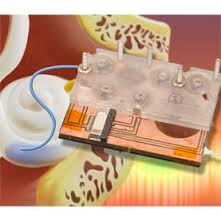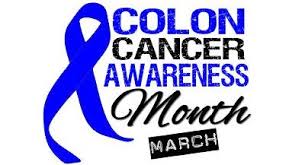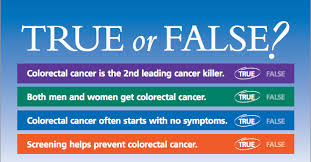Quisque in nulla ut metus cursus commodo non vitae nibh. Curabitur euismod sem vel velit blandit, sit amet molestie sapien pulvinar. […]
 Nearly half of food products in Europe contain residues of pesticides, with strawberries the most likely to exceed legal limits, the European Food Safety Authority (EFSA) said on Thursday.
Nearly half of food products in Europe contain residues of pesticides, with strawberries the most likely to exceed legal limits, the European Food Safety Authority (EFSA) said on Thursday.
The official EU body also found traces of pesticides in organic foods, though it said its analysis of almost 81,000 food samples found the risk of any negative impact on health was low.
But campaign groups said the data was worrying, especially in the cases where residues of more than one pesticide were found. They said the pesticides were mostly fungicides, which are possible carcinogens, and more research was needed into the implications of exposure to more than one.
pesticides were mostly fungicides, which are possible carcinogens, and more research was needed into the implications of exposure to more than one.
The latest EFSA report, for 2013, found that almost 55 percent of the samples of food products in European Union and neighboring countries were free from detectable traces of chemicals.
Of the rest, only 1.5 percent clearly exceeded legal limits, meaning that  businesses responsible for them face action.
businesses responsible for them face action.
The highest rate of exceeding limits was for strawberries (2.5 percent of the sample). They are especially sensitive to disease and so undergo considerable spraying with pesticides.
EFSA said it had tested for 685 pesticides in the 27 nations that belonged to the EU for all of 2013 (Croatia joined in that year), plus Norway and Iceland, and had found multiple residues in 27.3 percent of samples.
Source: Reuters
 Sufferers of tinnitus and other hearing disorders have had virtually no proved treatment options. That’s because the inner ear is one of the most inaccessible places in the human body—a bony, membrane-lined labyrinth measuring only a few cubic millimeters. These tight quarters make surgery all but impossible. “We can operate in the heart, in the brain, even inside the eye—the only place where we can’t operate in a functioning organ is the inner ear,” says Robert Jackler, a Stanford University School of Medicine otologist–neurotologist who specializes in complex ear diseases.
Sufferers of tinnitus and other hearing disorders have had virtually no proved treatment options. That’s because the inner ear is one of the most inaccessible places in the human body—a bony, membrane-lined labyrinth measuring only a few cubic millimeters. These tight quarters make surgery all but impossible. “We can operate in the heart, in the brain, even inside the eye—the only place where we can’t operate in a functioning organ is the inner ear,” says Robert Jackler, a Stanford University School of Medicine otologist–neurotologist who specializes in complex ear diseases.
The tiny space has also thwarted most attempts to develop and deliver drugs to treat hearing disorders, whether brought on by aging or exposure to loud noises. Such tiny amounts of fluid are needed, with even more finely tuned quantities of drugs, that attempts to dispense medication over long periods of time have failed. “We’ve tried directed medication when treating hearing disorders but the way we do it today is very imprecise and poorly calibrated,” Jackler says.
hearing disorders, whether brought on by aging or exposure to loud noises. Such tiny amounts of fluid are needed, with even more finely tuned quantities of drugs, that attempts to dispense medication over long periods of time have failed. “We’ve tried directed medication when treating hearing disorders but the way we do it today is very imprecise and poorly calibrated,” Jackler says.
 Listen carefully, though, and a slow, steady din of progress in materials science and bioengineering can be heard gathering momentum to help those suffering from a range of debilitating auditory ailments.
Listen carefully, though, and a slow, steady din of progress in materials science and bioengineering can be heard gathering momentum to help those suffering from a range of debilitating auditory ailments.
Two systems, in particular, are gaining a lot of attention: one that infuses a little polymer matrix with drugs to stop relentless ringing in the ears and one that uses a miniscule pump to deliver the goods to damaged hair cells, or cilia, that cause hearing loss.
Source: Scientific American
 Higher levels of vitamin D have been associated with a reduced risk of colon cancer in many observational studies. A new analysis has found a possible reason.
Higher levels of vitamin D have been associated with a reduced risk of colon cancer in many observational studies. A new analysis has found a possible reason.
A malignant tumor contains not just cancer cells but many types of cells, some of which affect how fast a tumor may grow or spread. Among them are a group of immune system cells called T lymphocytes, or T cells, that can target tumor cells and limit their growth. Having a tumor with more T cells correlates with a better prognosis.
The study, published in the journal Gut, included 318 people who had developed colorectal cancer and 624 matched controls. All had vitamin D levels measured before the appearance of any cancers.
The higher the blood levels of vitamin D, the less likely people were to develop colorectal tumors. Vitamin D, the authors suggest, interacts with the immune system to prevent the growth of this type of malignancy.
“This study really shows that vitamin D has an effect on immunity,” said the senior author, Dr. Shuji Ogino, an associate professor of pathology at the Dana-Farber Cancer Institute in Boston, “and it’s the first study to show that in a human population. Vitamin D boosts immunity not just in cancer, but in fighting infections as well.”
Source: New York Times
 Federal researchers have mapped out the percentage of foodborne illnesses associated with specific food groups. The CDC, FDA, and U.S. Department of Agriculture used data on nearly 1000 outbreaks from 1998 to 2012 — with a focus on the most recent 5 years — for four common foodborne pathogens:
Federal researchers have mapped out the percentage of foodborne illnesses associated with specific food groups. The CDC, FDA, and U.S. Department of Agriculture used data on nearly 1000 outbreaks from 1998 to 2012 — with a focus on the most recent 5 years — for four common foodborne pathogens:
-Campylobacter illnesses were most often attributable to dairy (66%), often unpasteurized, and chicken (8%)
-Most Escherichia coli O157 illnesses were caused by beef (46%) and vegetable row crops (36%).
-Listeria monocytogenes illnesses were often caused by fruits (50%) and dairy (31%).
-Salmonella illnesses came from a wider variety of sources, including seeded vegetables (18%), eggs (12%), fruit (12%), chicken (10%), sprouts (8%), beef (9%), and pork (8%).
Source: New England Journal of Medicine
Art is the only serious thing in the world.
And the artist is the only person who is never serious.




